Preparing Seniors for Their First Home Health Visit: A Practical Guide

Introduction: Setting the Stage for Successful In-Home Healthcare
Preparing seniors for their initial home health visit is a vital step in ensuring quality care, safety, and comfort. This guide provides comprehensive insights into what seniors and their families can expect, how to prepare homes and individuals, and the best practices to facilitate smooth healthcare sessions at home.
Understanding the Purpose of the First Home Health Visit

What should seniors and their families expect during the first in-home healthcare visit and assessment?
The initial home health visit is a critical step in establishing effective care tailored to the individual's needs. During this visit, typically lasting between 60 to 90 minutes, trained professionals such as registered nurses, physical therapists, or licensed healthcare providers conduct a comprehensive evaluation.
The assessment includes a review of the patient's current medical conditions, medication routines, recent hospital discharges, and overall health history. They also examine vital signs, inspect wounds if present, and evaluate the safety of the home environment to identify fall risks, fire hazards, or other safety concerns.
An important part of this visit is developing a personalized care plan. This plan is based on the patient’s health goals, daily routines, and specific needs. It may include recommendations for medication management, physical therapy exercises, wound care, or assistance with daily activities.
Families are encouraged to participate actively by providing insights into the patient’s habits, preferences, and concerns. This helps build trust and ensures that the care plan is relevant and practical.
The healthcare provider offers education on managing medications, recognizing symptoms that need urgent care, and navigating community resources for additional support. They also discuss emergency procedures, safety tips, and, if appropriate, introduce monitoring technology to keep track of health status remotely.
Overall, the first visit sets the foundation for ongoing care, focusing on safety, trust, and collaborative planning to enhance the patient’s quality of life.
The Components of a Successful First Visit
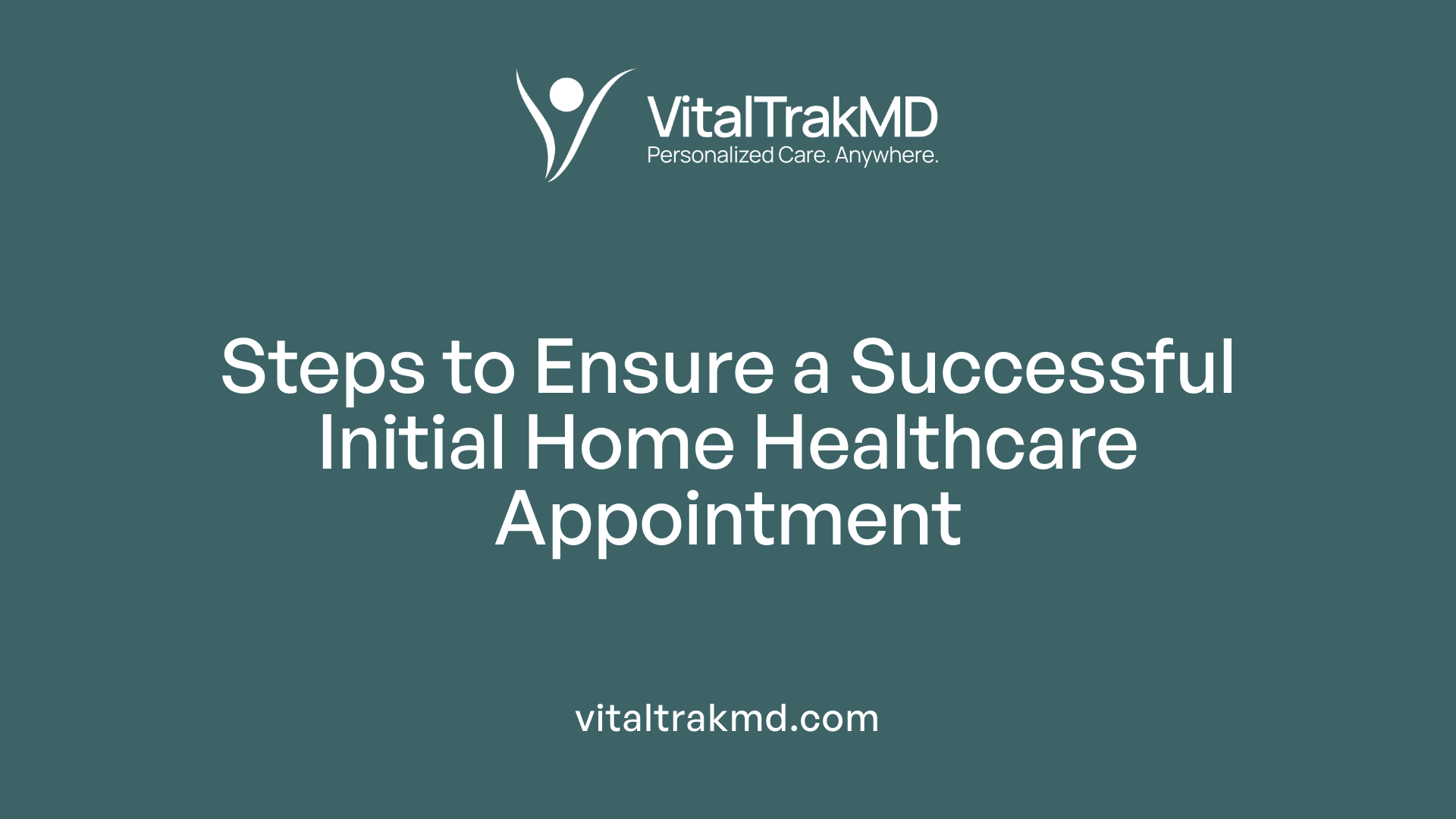
What steps are involved in the initial home health appointment for seniors?
The initial home health appointment is a pivotal step in ensuring seniors receive personalized and effective care. It begins with a coordinated scheduling process, where a VNS Health representative collaborates with the patient's doctor to determine the timing and scope of the visit. Once scheduled, the patient is typically notified via a phone call, providing clarity and preparing the individual and their family for what to expect.
During the visit, a licensed healthcare professional — often a nurse — conducts a detailed assessment. This includes reviewing the patient’s medical history, current health issues, and medication list. The provider also performs vital sign checks such as blood pressure, pulse, and temperature, and inspects the home environment to identify hazards that could compromise safety.
A significant part of the visit is explaining the care plan tailored to the patient's specific needs. The healthcare provider reviews hospital discharge instructions if applicable, educates the patient and family about ongoing treatments, medication management, and necessary lifestyle modifications. Necessary supplies and equipment are ordered to support ongoing care.
Preparation before the appointment is crucial. Families are encouraged to gather medical records, lists of current medications, and prepare questions or concerns in advance. This helps foster effective communication and ensures that no important detail is overlooked.
Typically, the visit lasts up to three hours depending on the patient's health complexity. The overarching goal is to build trust, develop a comprehensive and personalized plan of care, enhance safety at home, and lay a solid foundation for subsequent visits and ongoing health support. Clear communication, thorough assessment, and involving the family are essential to making the first home health visit successful.
Preparing the Home Environment for Safety and Accessibility
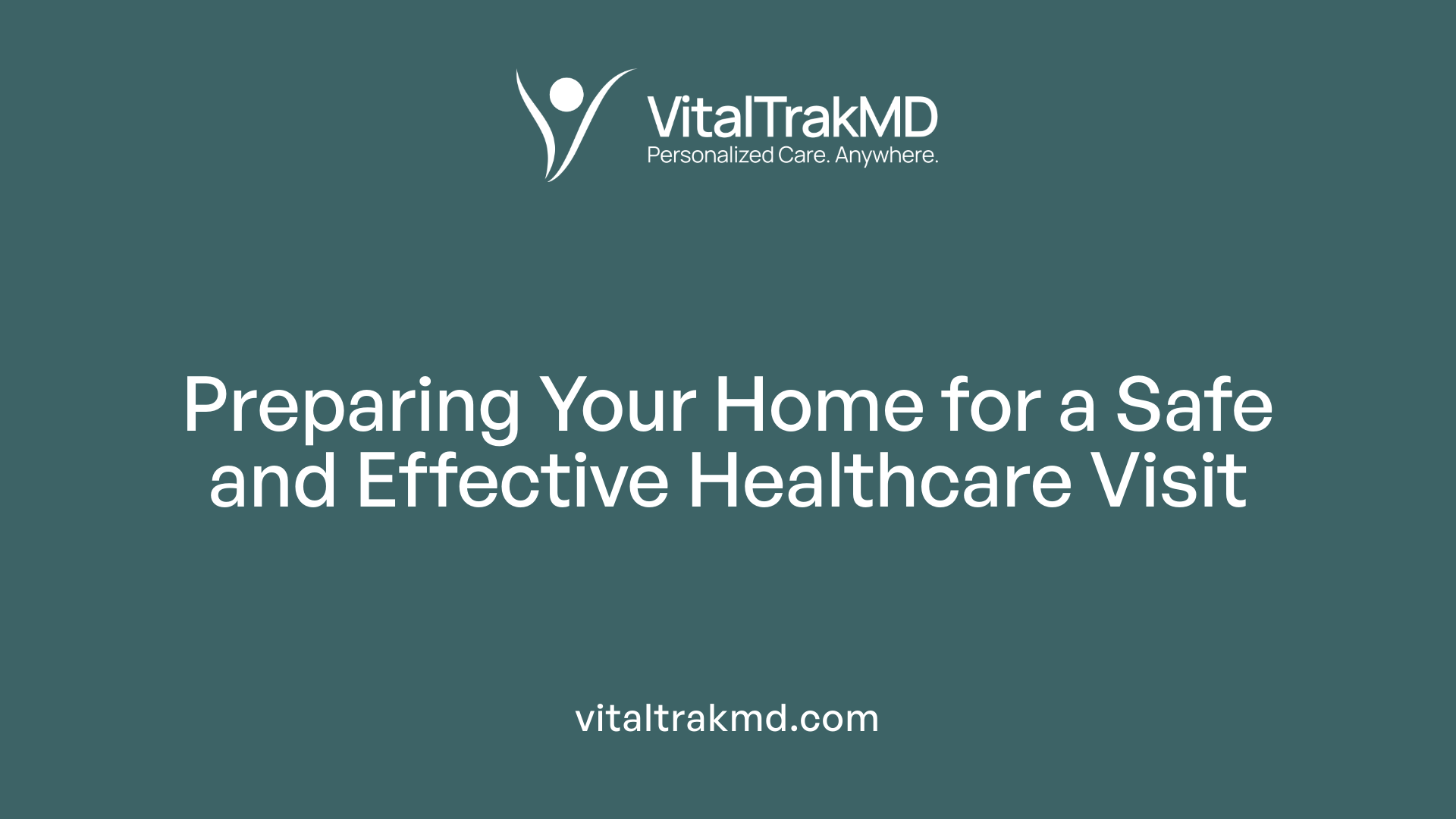
What are the best practices to prepare seniors and their homes for their first home health visit?
Preparing the home environment is vital for ensuring safe and effective care for seniors receiving home healthcare. A well-prepared space can significantly reduce risks and promote smoother visits from healthcare providers.
The first step is organizing essential medical documents. Keep medication lists, recent discharge instructions, and medical histories easily accessible. This documentation helps healthcare professionals understand the patient's condition quickly and accurately.
Next, assess the home for safety hazards. Conduct a thorough evaluation to identify and address factors like poor lighting, loose rugs, clutter, or obstacles that could cause falls or injuries. Making safety modifications, such as installing grab bars in bathrooms, adding non-slip mats, and securing cords or wires, enhances safety.
Decluttering is another crucial aspect. Removing unnecessary furniture or clutter creates clear pathways and reduces tripping hazards. Keep walkways free and well-lit, and ensure that essential items are within easy reach.
Installation of safety devices can further improve safety and monitoring. Consider installing handrails near stairs and in bathrooms, nightlights to improve visibility at night, and security alarms or cameras if additional oversight is necessary.
Discussing care plans with healthcare providers before the visit helps tailor modifications and ensure all safety measures align with medical needs. Patients and their families should prepare a daily schedule, emergency contacts, and note any specific responsibilities for the visiting healthcare team.
Introducing the nurse or healthcare provider to the home environment and reviewing the care plan together can facilitate a smoother visit. This ensures the provider understands home layout, access points, and specific safety concerns, making the first encounter productive and reassuring.
By taking these proactive steps, families can create a secure, accessible, and comfortable environment that supports ongoing health and independence for their loved ones.
Physical and Mental Preparation Strategies for Seniors and Caregivers
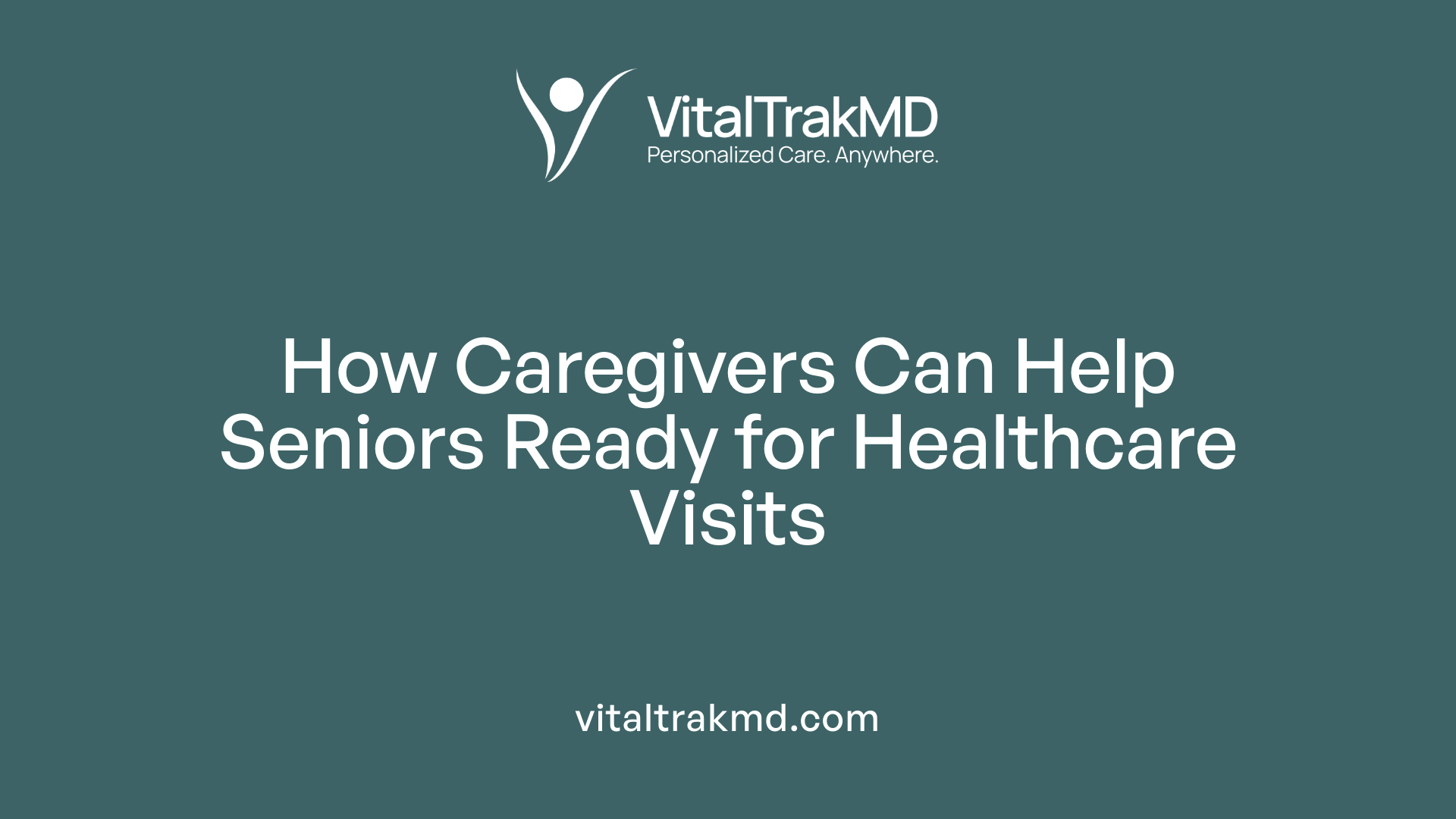
How can caregivers help seniors mentally and physically prepare for healthcare visits?
Preparing seniors for healthcare appointments requires thoughtful strategies that ease anxiety and promote effective communication. Caregivers play a crucial role in ensuring seniors are organized, comfortable, and confident about their visits.
One important step is to gather and organize all relevant medical documents. This includes a current list of medications, medical history, insurance information, and any recent test results. Having these details easily accessible helps prevent delays and ensures healthcare providers have the complete picture.
Accompanying seniors to their appointments is highly beneficial. During visits, caregivers can take notes, ask questions on behalf of the senior, and clarify instructions. This active participation not only improves understanding but also reassures seniors that they are supported.
Fostering physical comfort involves assisting with mobility. Bringing mobility aids like canes, walkers, or wheelchairs can help seniors get in and out of the clinic smoothly. Additionally, ensuring they wear comfortable clothing and have access to visual or hearing aids can improve communication and reduce frustration.
Effective communication is key. Caregivers should encourage seniors to speak clearly and use simple language. Explaining procedures beforehand and asking the healthcare provider to repeat or clarify information can significantly boost the senior's confidence.
To further reduce stress, caregivers should prepare visual aids or written instructions for post-visit care. Following up on recommendations and appointments ensures continuity and prevents misunderstandings.
Respecting the senior's privacy and involving them actively in decision-making fosters a sense of control and dignity. Maintaining a calm, respectful environment allows seniors to feel valued and heard.
Overall, a combination of organization, physical assistance, clear communication, and emotional support contributes to smoother, less stressful healthcare experiences for seniors. These strategies empower older adults to participate actively in their care and promote better health outcomes.
Coordination and Communication Among Care Teams and Families
How can family members be involved in in-home healthcare?
Family involvement is vital to the success of in-home health services. Families play a crucial role in providing emotional support, helping with decision-making, and assisting with daily activities. They can also act as advocates for their loved ones, ensuring that care plans are followed and that the senior's preferences are respected.
Effective involvement begins with clear communication. Family members should be engaged early in care planning and regularly updated about the patient's health status. Participating in medical appointments, either physically or virtually, helps families stay informed and involved.
Furthermore, families can contribute to safety by monitoring for changes in health, managing medication schedules, and providing comfort and reassurance. Encouraging seniors to express their wishes and involving them in decisions helps maintain their dignity and independence.
How should care plans be developed and updated?
Creating a comprehensive, personalized care plan is essential for effective home healthcare. These plans should address medical conditions, medication management, nutrition, mobility, and emotional well-being.
Care plans should be flexible, allowing adjustments as the patient's needs evolve. Regular reviews with healthcare providers ensure that the care remains relevant and effective. Family members should be included in these reviews to provide insights and support.
Utilizing tools like process flow maps and driver diagrams can help structure care development and track progress. Proper documentation ensures continuity of care and aids in coordinating among various providers.
What are best practices for establishing clear communication channels?
Open and consistent communication between healthcare teams and families is fundamental. Establishing regular check-ins, whether through phone calls, video conferences, or in-person meetings, helps address concerns promptly.
Technology such as telehealth platforms, secure messaging, and shared electronic health records facilitate real-time updates and easy access to health information.
Designating a primary contact within the family and healthcare team can streamline communication, prevent misunderstandings, and ensure accountability. Clear documentation of care instructions and emergency protocols also plays a vital role.
Practical advice for preparing seniors for in-home healthcare sessions
Caregivers should organize comprehensive medical histories and develop tailored care plans aligned with the senior’s specific conditions. Ensuring a safe, accessible home environment by removing hazards, installing safety features, and labeling important areas can prevent injuries.
Communicating openly with healthcare providers, seniors, and family members about expectations helps build trust and clarity. Establishing routines, using reminder systems, and involving seniors in decision-making promote independence and comfort.
Seeking support from community resources and respite services ensures caregivers can maintain their well-being and provide consistent care.
| Aspect | Recommendations | Details |
|---|---|---|
| Safety | Remove hazards, install safety features | Prevents injuries, promotes independence |
| Communication | Regular updates, appointments | Ensures alignment and trust |
| Routine | Use reminders, involve seniors | Enhances comfort and participation |
| Support | Community resources, respite care | Maintains caregiver well-being |
By fostering strong partnerships among families, healthcare providers, and seniors, in-home healthcare can be effective, safe, and responsive to changing needs. Regular communication, detailed planning, and active involvement are all essential elements of a successful home care experience.
Creating a Conducive Environment for a Successful Visit
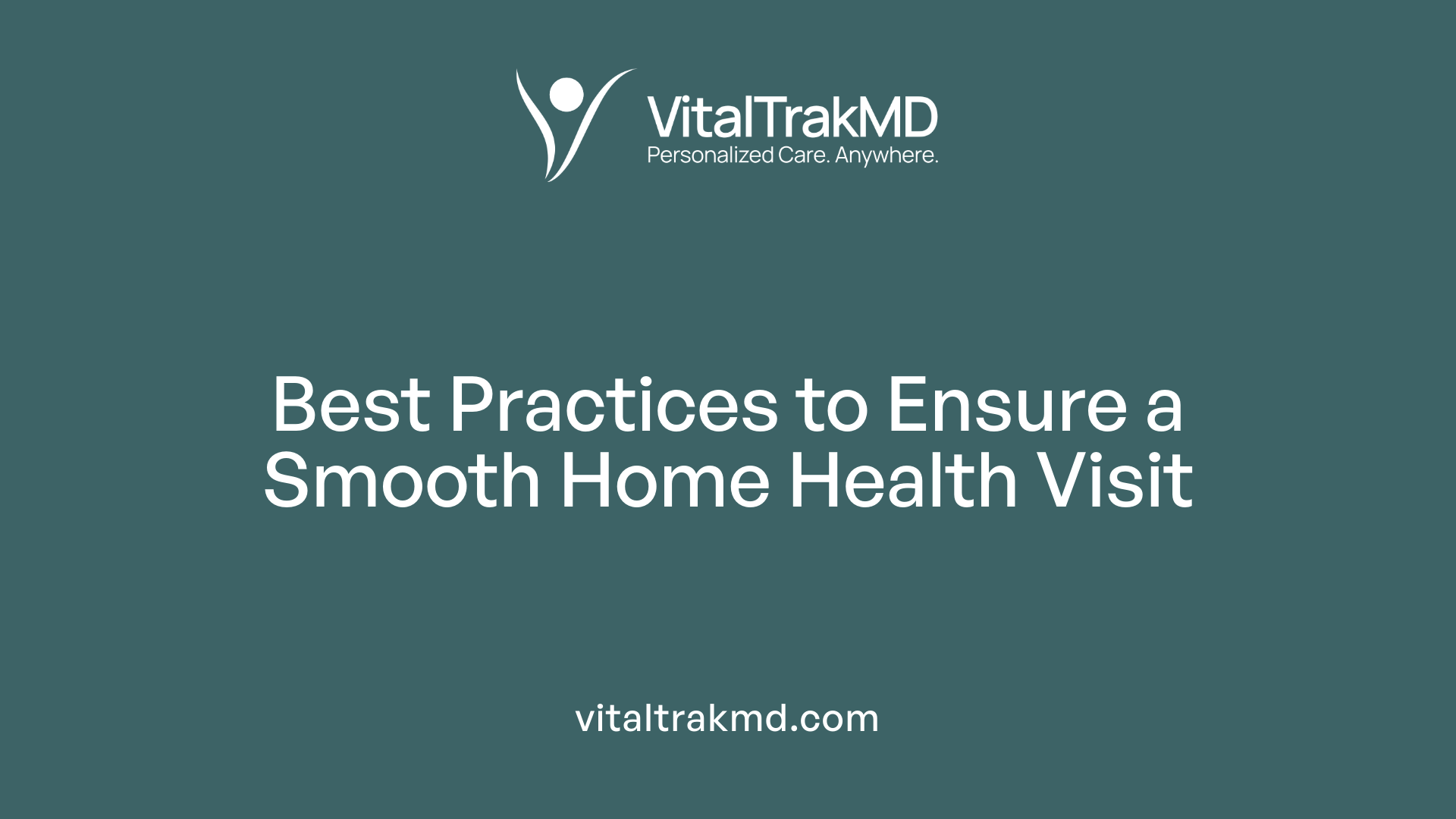
What are the best practices to ensure a smooth and successful home health visit for elderly patients?
To make home health visits effective and comfortable, practitioners should adopt several best practices centered around patient well-being and safety.
First, clear and empathetic communication is vital. Building rapport and actively listening help to understand the individual needs and concerns of elderly patients. This fosters trust and encourages cooperation.
Preparation plays a critical role. Caregivers should organize all necessary documents, such as medical histories, medication lists, and care plans, beforehand. Conducting a thorough safety assessment of the home environment is essential to identify hazards like loose rugs, poor lighting, or clutter. Simple home modifications, such as adding grab bars or removing trip hazards, can significantly reduce risks.
Ensuring the environment is clean, accessible, and hazard-free creates a comfortable space conducive to healing and care. Minimal distractions during the visit—such as turning off loud electronics or isolating pets—help maintain focus on the patient.
Involving the senior in preparations encourages autonomy and ensures the environment is tailored to their preferences. Asking about their comfort needs and involving them in planning the visit fosters cooperation and reduces anxiety.
Utilizing technology, like telehealth devices, can enhance the quality of care. Video consultations, remote monitoring, and digital health tools support ongoing assessment and quick communication.
Flexibility and patience remain cornerstones of successful visits. Unexpected challenges are common, so providers should stay adaptable and maintain a positive attitude.
Ongoing staff training on safety protocols, effective communication, and cultural competence enhances the quality of care delivery. Proper documentation of assessments, interventions, and patient responses ensures continuity.
Collaboration with the patient, their family, and other healthcare providers ensures a holistic approach. Family involvement is crucial for reinforcing care plans and providing emotional support.
In summary, creating a welcoming, safe, and engaging environment—including thorough preparation, effective communication, and adaptability—helps achieve the best outcomes during home health visits for older adults.
Additional Resources for Best Practices in Home Health Visits
| Resource Type | Focus Area | Description |
|---|---|---|
| American Geriatrics Society | Geriatric Care | Guides on engaging older adults effectively |
| Red Cross | First-aid & Safety | Training for home visit safety and emergency procedures |
| Telehealth Association | Technology Use | Best practices for integrating telehealth in home care |
| Department of Health & Human Services | Regulations & Standards | Policies governing home health services |
This structured approach ensures the environment supports effective, respectful, and compassionate home healthcare, ultimately improving patient outcomes and satisfaction.
Safety Precautions and Assessment Tools During Home Visits
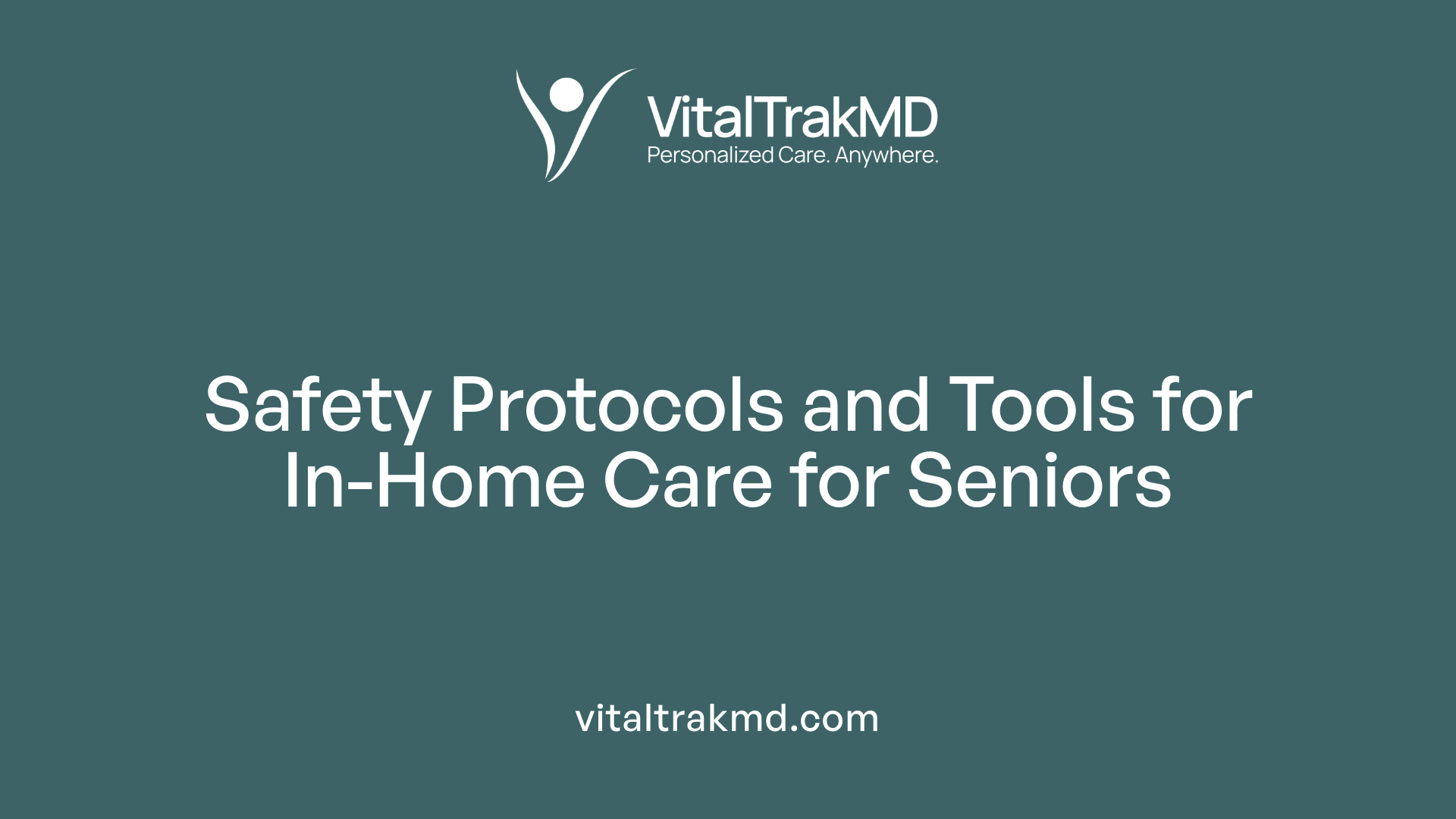
What safety precautions and assessment tools are used during home health visits for seniors?
Ensuring the safety of seniors during home healthcare visits is a critical component of providing effective and compassionate care. Healthcare providers adopt several precautions to create a secure environment and utilize specialized tools to assess potential hazards.
Environmental safety measures are fundamental. They include removing or minimizing potential hazards like loose rugs, clutter, and exposed cords that could cause falls. Installing safety devices such as grab bars in bathrooms, non-slip mats, and smoke detectors enhances safety. Adequate lighting throughout the home, especially in hallways and staircases, reduces the risk of accidents.
Assessment tools specific to home safety include the SAFER-HOME v3, Home FAST, and Westmead Home Safety Assessment (WeHSA). These tools help evaluate fall risks, mobility issues, and overall safety. They involve both professional evaluations and self-assessments by patients and caregivers. For example, SAFER-HOME v3 considers environmental hazards, functional abilities, and social factors influencing safety.
Routine safety checks are imperative. Healthcare workers regularly inspect safety devices to ensure they function properly and teach patients and caregivers how to use safety equipment correctly. Proper equipment maintenance and routine assessments help in early identification of hazards.
Infection control is also a significant focus. Healthcare providers adhere to strict hand hygiene practices, use personal protective equipment (PPE), and disinfect medical instruments and surfaces regularly. These measures prevent infections, especially in immunocompromised seniors.
Fire safety measures, including accessible fire extinguishers and clear escape routes, are emphasized. Providers also educate seniors and caregivers on emergency preparedness, such as how to evacuate safely or disconnect electrical devices in case of fire.
Combining environmental modifications with assessment tools and education ensures seniors live in safer homes. Regular screening, ongoing evaluations, and caregiver involvement create a holistic approach to home safety.
| Safety Measure | Description | Additional Notes |
|---|---|---|
| Environmental modifications | Remove hazards, install safety devices | Includes grab bars, smoke alarms |
| Fall risk assessment tools | SAFER-HOME v3, Home FAST, WeHSA | Evaluate hazards and mobility |
| Infection control | Hand hygiene, PPE, disinfecting | Reduces infection risk |
| Fire safety | Fire extinguishers, escape plans | Ensures quick response |
| Emergency planning | Evacuation plans, training | Preparedness for emergencies |
In summary, a comprehensive approach involving safety modifications, assessment tools, and patient education plays a pivotal role in safeguarding seniors during home healthcare visits. Regular updates and active participation of caregivers further enhance safety, minimizing hazards and promoting independence.
The Role of Technology in Home Healthcare
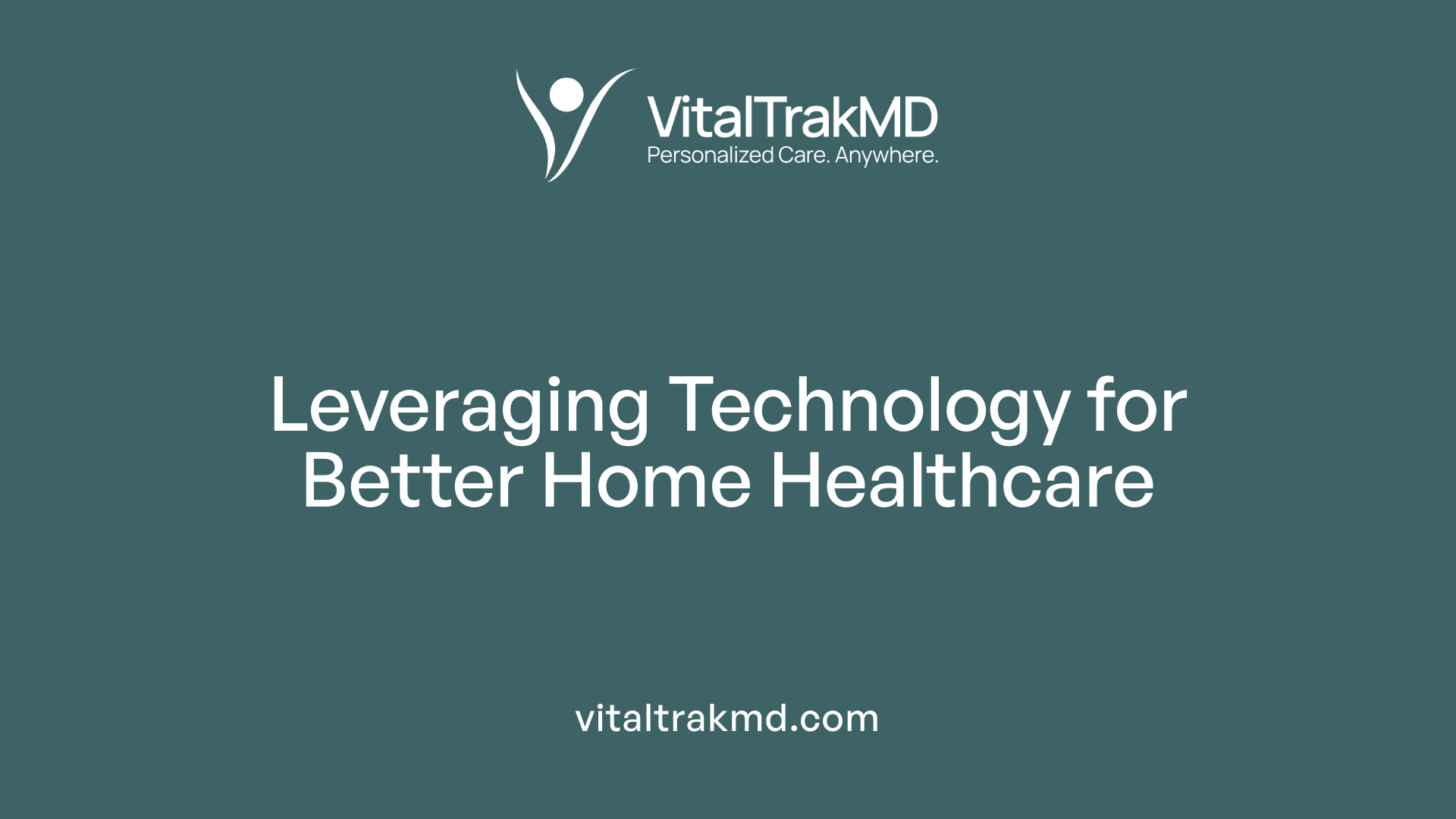
How can telehealth and technology facilitate effective home health visits?
Implementing technology in home healthcare has revolutionized how care is delivered, especially for older adults and those with chronic conditions. Telehealth equipment, such as high-quality webcams, reliable internet connections, and portable blood pressure monitors, enable healthcare providers to conduct virtual consultations effectively. These tools make it possible to maintain regular contact with patients, assess health status, and adjust treatment plans without the need for frequent in-person visits.
Remote monitoring devices are integral to modern home healthcare. They continuously track vital signs like heart rate, blood pressure, oxygen saturation, and blood glucose levels. The data collected can be transmitted in real-time to healthcare teams, allowing for prompt interventions if issues arise. This constant oversight helps prevent complications, reduces hospitalizations, and supports timely decision-making.
Virtual consultations offer distinctive advantages. They save time, reduce travel stresses, and lower healthcare costs. For seniors with mobility challenges or those living in rural areas, virtual services are particularly beneficial, providing access to specialist care and routine check-ups from the comfort of their homes.
Effective use of these technologies depends on proper training. Caregivers and patients must understand how to operate devices correctly. Education ensures devices are used safely and effectively, maximizing the benefits of virtual healthcare solutions.
In summary, integrating telehealth tools and remote monitoring devices improves the quality of home healthcare by fostering continuous supervision, enhancing communication, and providing real-time health data. These advancements create a more responsive, efficient, and patient-centered approach to managing health at home.
Financial Planning and Insurance Considerations
What costs are associated with home healthcare, and how can families plan financially?
The expenses related to home healthcare can vary significantly based on the level of care needed. Services such as skilled nursing, physical and occupational therapy, medication management, wound care, and assistance with daily activities often form the core components of home healthcare. Costs depend on the frequency, intensity, and duration of these services.
While insurance programs like Medicare and Medicaid often cover many of these services, coverage specifics can differ. For example, Medicare typically covers skilled nursing and therapy services if certain criteria are met, but other services may require out-of-pocket payments or supplemental insurance. Private insurance plans may also provide varying degrees of coverage for home healthcare, emphasizing the importance of reviewing individual policies carefully.
Families should actively plan for the financial aspects of home care to avoid unexpected expenses. This involves understanding what is covered under existing insurance policies, including coverage caps and reimbursement procedures. It is also helpful to explore additional resources such as state-funded programs, community assistance, or charitable organizations that can provide financial support.
An effective strategy includes evaluating the potential gaps in coverage and setting aside funds accordingly. Consulting with financial advisors or social workers who are familiar with healthcare funding can assist families in creating a realistic budget that accounts for both expected and unforeseen expenses.
Additionally, families should be aware of the potential for medical expenses not covered by insurance, such as home modifications, assistive technologies, or specialized equipment. Planning for these costs involves researching available financial assistance programs and understanding eligibility criteria.
Overall, proactive financial planning ensures that individuals receive consistent, high-quality home healthcare without placing excessive strain on personal finances. Proper planning also provides peace of mind, allowing families to focus on delivering supportive care tailored to their loved ones' needs.
For further assistance, families can search using terms like "Financial planning for senior home healthcare costs" to find tailored resources and guidance relevant to their specific situation.
Regulatory Guidelines and Best Practices for Home Healthcare Providers
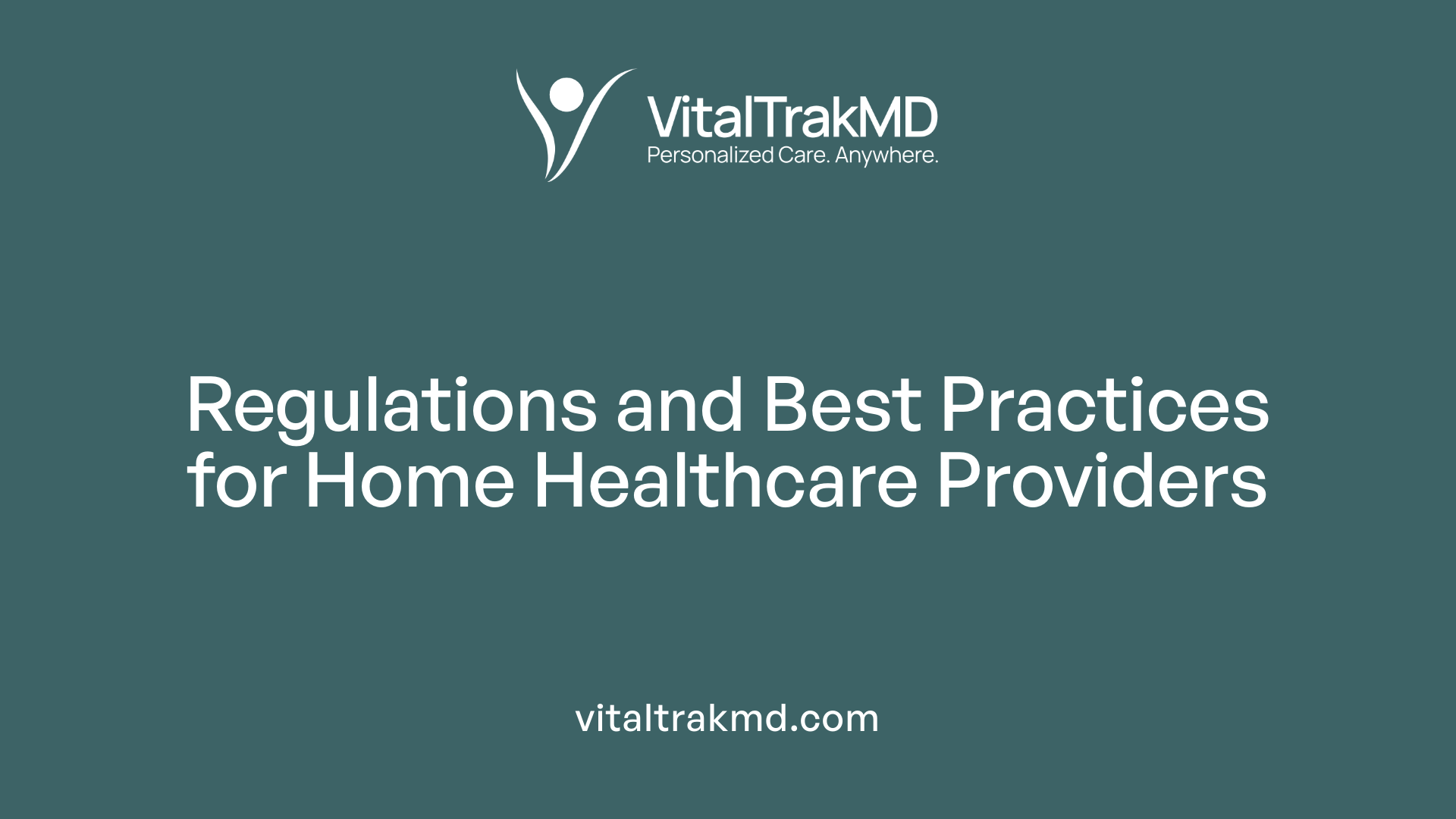
What are the regulatory considerations and best practices for home healthcare providers to ensure high-quality care?
Home healthcare providers operate within a framework of regulations designed to safeguard patients and enhance care quality. Licensing is a fundamental requirement, with providers needing to meet state and federal standards before delivering services. Compliance with these regulations ensures that care settings adhere to safety, staffing, and operational benchmarks.
Maintaining thorough and precise documentation is crucial. This includes detailed care notes, medication records, and progress reports, which serve both as legal records and tools for ongoing care improvement. Accurate billing practices aligned with specific Current Procedural Terminology (CPT) codes support appropriate reimbursement and transparency.
Evidence-based practices form the backbone of high-quality home healthcare. Providers should stay abreast of the latest clinical guidelines and incorporate proven strategies into daily routines. Regular staff training on topics such as infection control, emergency procedures, and safety standards enhances service delivery.
Quality assurance processes are integral. Utilizing tools like driver diagrams and process flow maps helps identify areas for improvement and streamline workflows. Routine audits and performance reviews encourage accountability and ensure adherence to safety protocols.
Safety and patient privacy are paramount. Implementing strict protocols for infection prevention, fall prevention, and emergency preparedness protects vulnerable populations. Ensuring secure handling of patient data aligns with privacy laws like HIPAA, fostering trust.
Engaging with regulatory updates and participating in ongoing education programs ensures providers remain compliant with evolving standards. Feedback from patients and caregivers contributes valuable insights, guiding continuous quality improvements.
In summary, high-quality home healthcare hinges on adherence to licensing standards, meticulous documentation and billing, evidence-based practices, staff training, robust safety measures, and continuous quality monitoring. These elements collectively create a trustworthy and effective care environment for older adults receiving home-based services.
The Growing Trend of House Calls and Its Benefits for Seniors
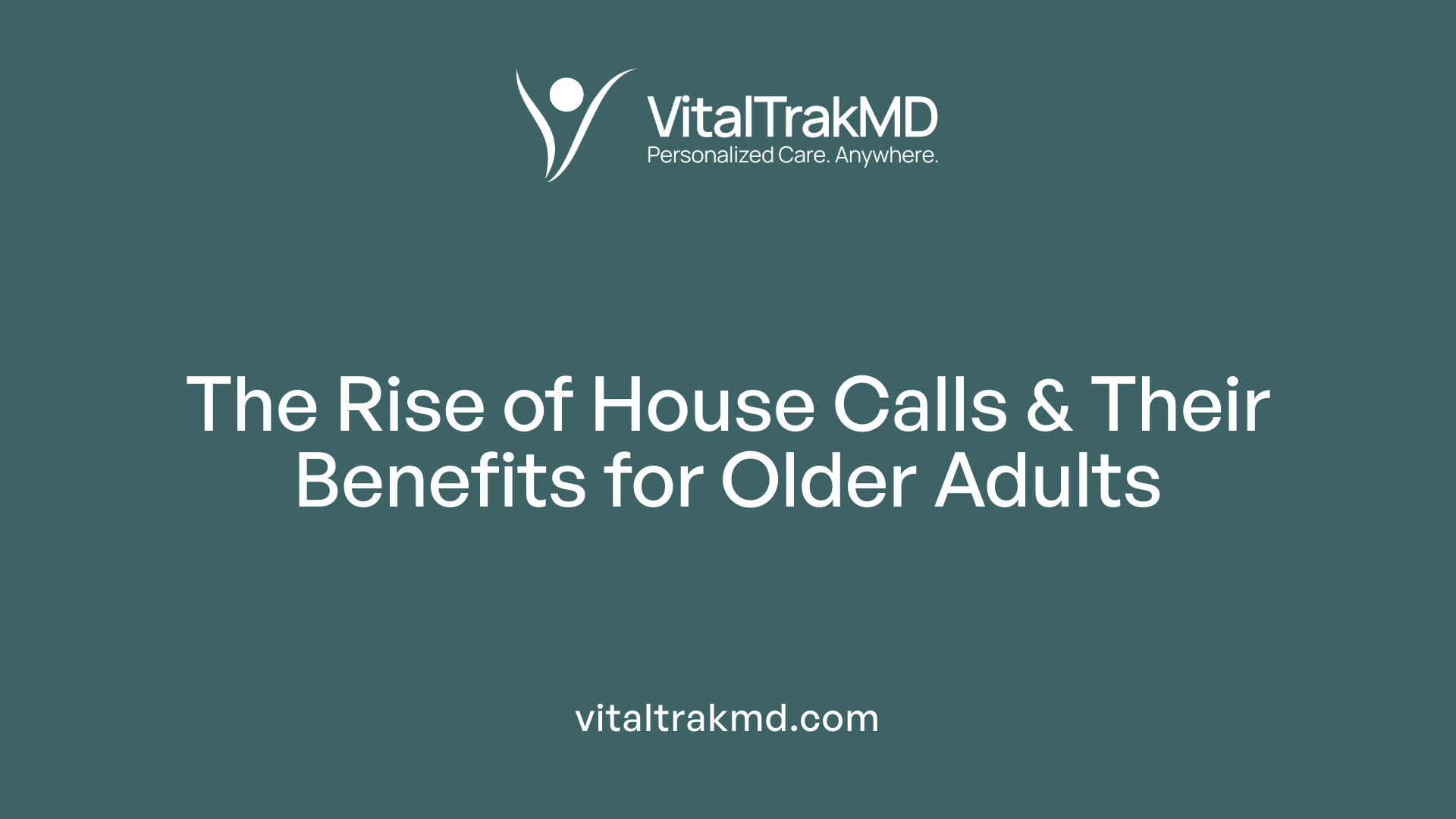
What is the current trend in house calls for seniors, and how do they benefit patients?
House calls are experiencing a notable rise in the United States. In 2015, nearly 2.6 million visits were paid for this form of healthcare. This increase reflects a shift towards more personalized and convenient medical care, especially for older adults.
These visits play a critical role in post-hospitalization care. They have been shown to significantly reduce hospital readmission rates, which is essential for maintaining health and avoiding costly re-hospitalizations. House calls also help minimize errors during care transitions by allowing healthcare providers to directly observe the patient’s environment and medication practices.
In addition to acute care, house calls are used for managing chronic conditions, performing assessments for elder abuse, and conducting evaluations of geriatric syndromes. For seniors who may find it difficult to leave their homes, this service provides much-needed medical attention without the stress and inconvenience of traveling.
The direct evaluation of the home setting enables healthcare providers to tailor care plans effectively, addressing safety hazards and modifying the environment to suit individual needs. To ensure effective visits, pre-visit planning is essential. This includes reviewing medical records and ensuring safety precautions such as pet cageing are in place.
Advancements in portable technology—like blood pressure monitors, telehealth equipment, and medical supplies—alongside the use of multidisciplinary teams, have greatly enhanced the quality of these home visits. Such innovations enable comprehensive assessments and more efficient care delivery.
As the aging population grows, this healthcare model’s importance increases. It offers a patient-centered approach that promotes safety, improves health outcomes, and reduces healthcare costs, making house calls an increasingly vital component of senior healthcare strategies.
Documentation and Reimbursement Protocols for Home Visits
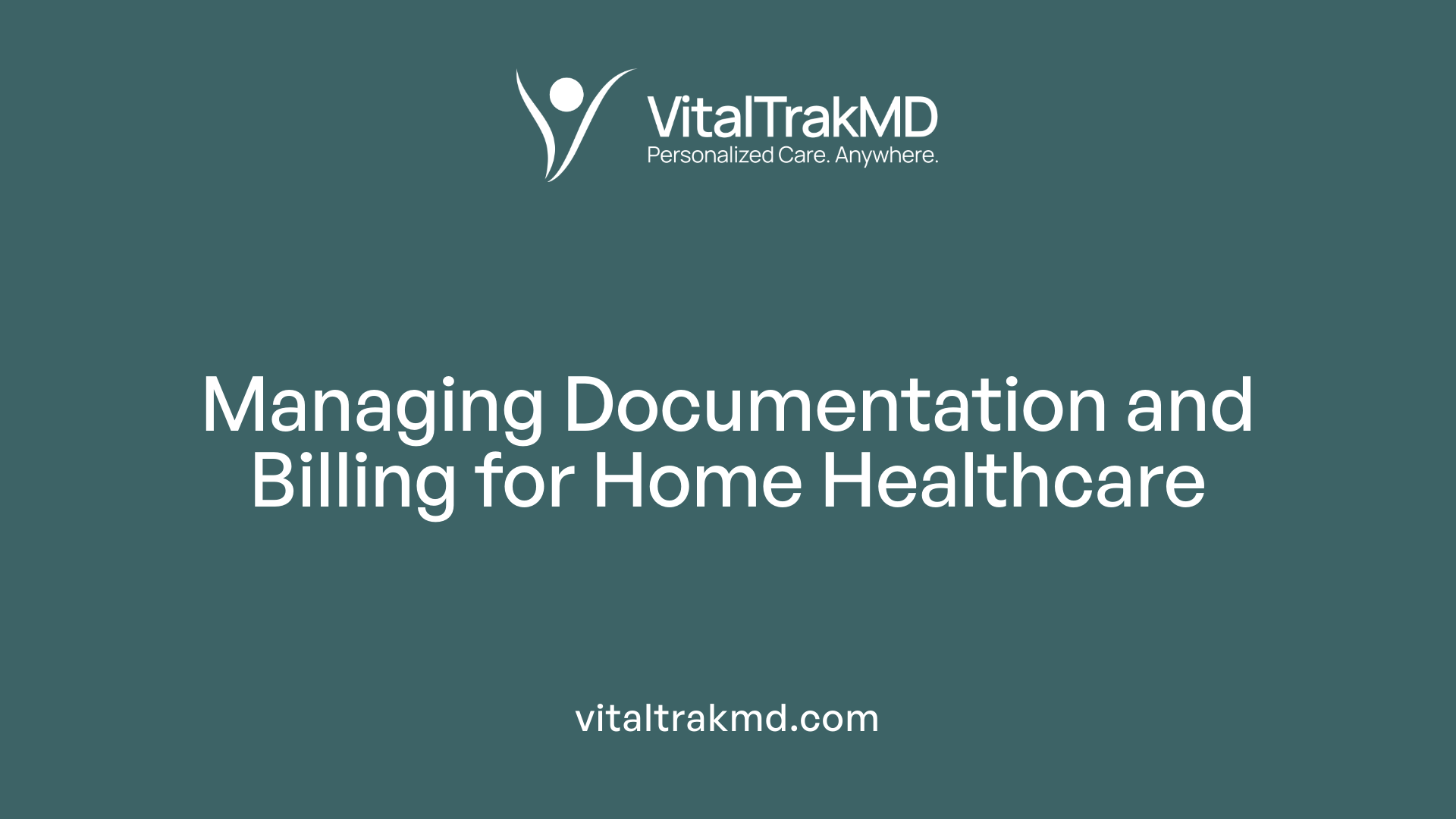
How are documentation and billing for home health visits managed to ensure appropriate reimbursement?
Managing documentation and billing effectively is crucial for sustaining home healthcare services and ensuring providers receive proper payment. Each home visit must be accurately documented to reflect the care provided and support billing claims.
Billing for home health visits relies on specific Current Procedural Terminology (CPT) codes. These codes are designed to correspond with the evaluation and management (E/M) severity levels and the setting of care, such as a patient's home. Accurate use of these codes requires understanding the complexity of the visit, the time spent, and the clinical interventions performed.
Providers should maintain comprehensive records during each visit, including:
- The reason for the visit and overall patient condition.
- Specific tasks undertaken during the appointment.
- Medical observations, assessments, and findings.
- Interventions and treatments administered.
- Anticipated outcomes and follow-up plans.
Thorough documentation not only supports reimbursement but also ensures compliance with healthcare regulations, minimizes denied claims, and provides a clear medical record for future care.
How are evaluation and management severity levels determined?
Determining the appropriate level of service severity involves assessing the complexity of the case, patient's health status, and the extent of care required during the visit. CPT codes differentiate between various levels, from straightforward to more complex evaluations.
Providers must evaluate patient history, physical exam findings, and medical decision-making complexity. For example, a simple check-up might be billed at a lower level, whereas detailed assessments involving multiple issues or chronic condition management are billed at higher levels.
Regular training helps healthcare professionals stay updated on coding changes and requirements. Such training ensures they correctly match the visit's complexity to the proper CPT code, simplifying billing and optimizing revenue.
How can proper reimbursement be ensured?
Proper reimbursement hinges on meticulous documentation and adherence to billing guidelines. Providers should:
- Use precise CPT codes that accurately reflect the severity and scope of the visit.
- Provide clear, detailed notes supporting the chosen codes.
- Understand payer-specific requirements and standards.
- Keep updated on changes in billing policies through continuous education.
- Implement internal reviews or audits periodically to verify coding accuracy.
When the documentation aligns with billing practices, claims are processed smoothly, reducing delays or denials. Additionally, staying compliant with regulations helps avoid penalties and supports the continued viability of home healthcare programs.
In conclusion, managing billing and documentation with accuracy and understanding aids healthcare providers in delivering effective care while securing appropriate reimbursement.
| Aspect | Details | Additional Notes |
|---|---|---|
| Billing codes | CPT codes aligned with visit complexity | Use the latest coding standards and payer-specific guidelines |
| Documentation | Detailed notes on assessments, interventions, outcomes | Accurate records facilitate smooth reimbursement process |
| Evaluation and management levels | Based on patient history, exam, decision-making | Regular training ensures correct code selection |
| Reimbursement strategies | Proper coding, thorough documentation, audits | Continuous education and compliance are essential |
| Payer requirements | Follow specific insurer policies | Understanding differences in Medicare, Medicaid, and private insurers |
Enhancing the Quality and Safety of Home Healthcare
What are some best practices to ensure high-quality, safe, and effective home healthcare services?
Ensuring top-quality and safe home healthcare involves multiple strategies that focus on continuous improvement, effective staff training, and patient-centered care.
One vital approach is implementing ongoing quality improvement initiatives. These include regularly reviewing care practices, utilizing checklists, and adopting evidence-based tools like SAFER-HOME assessments. These tools help healthcare providers identify hazards in the home environment, evaluate patient functional abilities, and develop tailored care plans.
Staff training is another cornerstone. Regular competency assessments for caregivers and healthcare professionals ensure they stay updated on best practices, infection control protocols, and emergency procedures. Well-trained staff are better equipped to deliver safe, effective, and compassionate care.
Proper documentation plays a crucial role in patient safety. Maintaining accurate records, including medication management and care notes, promotes accountability and helps prevent errors.
Communication is essential. Clear, respectful dialogue with patients and their families ensures that care preferences are understood and respected. Engaging family members and caregivers actively in the care process enhances safety and compliance.
Technology also adds a layer of oversight. Using telehealth systems, such as high-quality webcams and blood pressure monitors, allows providers to monitor patient health remotely and respond swiftly to any issues.
Patient safety and satisfaction are continually improved by conducting regular health outcomes assessments and collecting feedback through satisfaction surveys. This feedback guides modifications to care plans and service delivery.
In sum, the combination of evidence-based practices, thorough staff training, transparent communication, technological support, and ongoing evaluation fosters a culture of safety and excellence in home healthcare.
The Importance of High-Quality Documentation and Recordkeeping
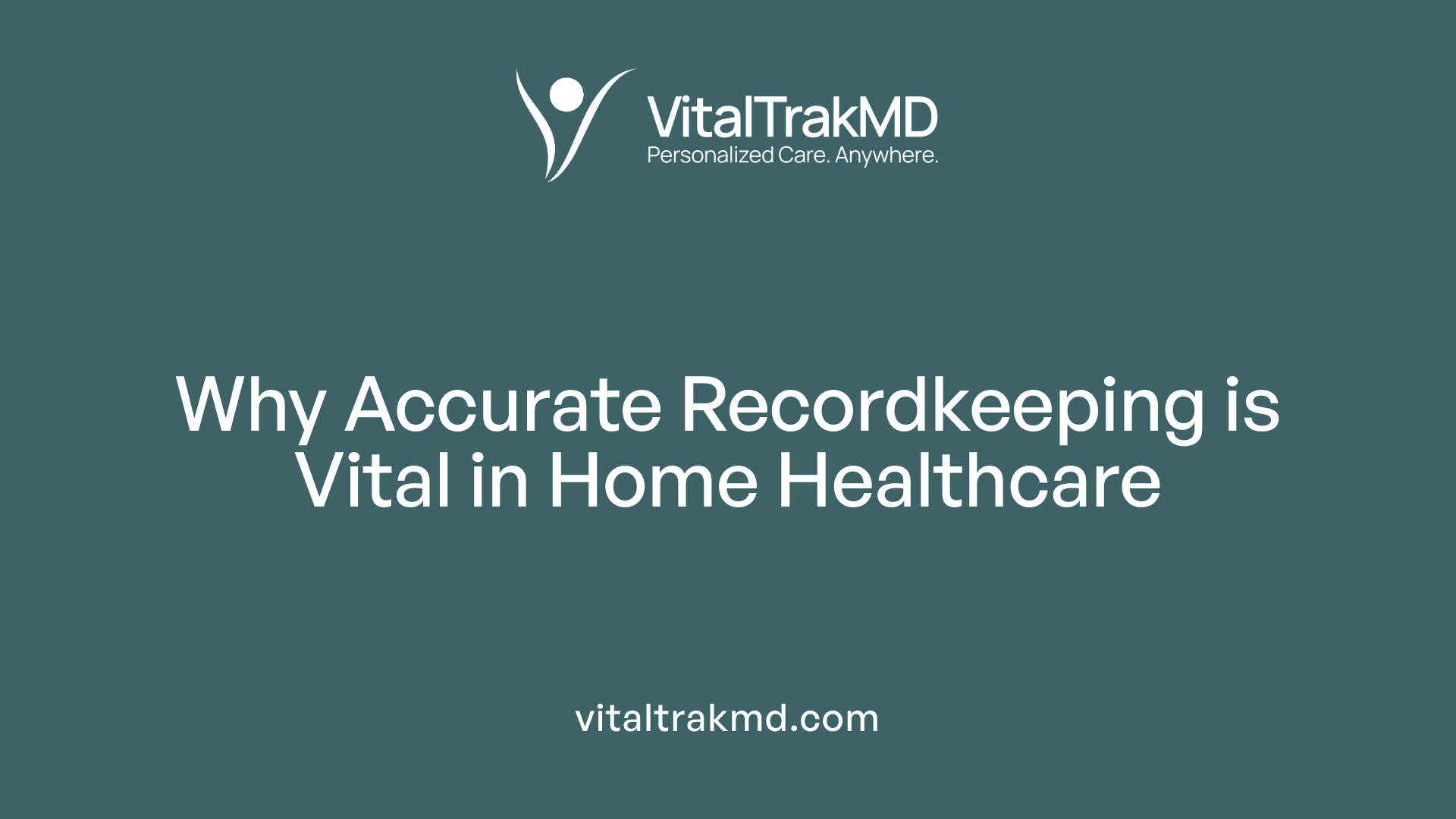
Why is proper documentation crucial in home healthcare, and what does it encompass?
In home healthcare, accurate and thorough recordkeeping is fundamental to delivering safe, effective, and compliant care. Proper documentation ensures that every aspect of a patient's treatment and condition is recorded, facilitating continuity even when different healthcare providers are involved.
Essentially, good records include detailed assessments, individualized care plans, and documentation of interventions and patient responses. For instance, notes from nursing visits, physical therapy sessions, medication adjustments, wound care, and daily activity assistance all contribute to a complete picture of ongoing care.
This comprehensive documentation supports clinical decision-making by providing timely, relevant information to each provider involved. It also helps maintain clear communication among team members, reducing the risk of errors and redundant treatments.
Beyond clinical needs, detailed records have legal importance. They serve as evidence that services were provided and standards were met, which is critical in the event of disputes or audits.
Billing accuracy is further enhanced by well-maintained records. Precise documentation of the care provided aligns with billing codes and payer requirements, helping to avoid costly errors and ensure proper reimbursement.
Data security and privacy are crucial components of recordkeeping. Patient information must be protected in accordance with privacy laws such as HIPAA, which set standards for confidentiality, security, and breach notification.
In essence, high-quality recordkeeping builds trust between patients and providers, ensures accountability, and upholds the integrity of home healthcare services. Proper management of records reduces liability, supports compliance, and enables ongoing quality improvement.
| Aspect | Description | Importance |
|---|---|---|
| Accuracy | Precise entries of medical assessments, treatments, and patient responses | Ensures effective clinical decisions and billing |
| Completeness | Inclusion of all relevant medical, social, and logistical data | Facilitates comprehensive care and legal protection |
| Confidentiality | Secure handling of patient records | Protects patient rights and satisfies legal standards |
| Accessibility | Easy retrieval of records for authorized personnel | Supports timely care and audits |
By adhering to best practices in documentation, home healthcare providers can deliver high-caliber care aligned with legal and ethical standards, ultimately benefitting both patients and care teams.
Summary and Future Perspectives on Home Healthcare for Seniors
What is the future outlook for in-home healthcare for seniors, and what innovations are anticipated?
The outlook for in-home healthcare for seniors is promising, with a clear trend towards expansion of services and improved technology integration. As the aging population grows, healthcare providers and policymakers recognize the importance of delivering care in the comfort of patients' homes.
Innovative solutions are shaping the future of home healthcare. Artificial intelligence (AI) and remote monitoring devices will enable early detection of health issues, allowing for timely intervention. Enhanced telehealth platforms with high-quality video and sensor technology will support virtual visits, making healthcare more accessible and reducing the need for hospital visits.
Policy support plays a vital role in this evolution. Reforms encouraging licensure, safety standards, and flexible billing options will make home healthcare more feasible for providers and more affordable for patients. A shift towards multidisciplinary team approaches—combining medical, social, and support services—will foster comprehensive, patient-centered care.
Upcoming models of care will emphasize personalization and proactive management. Integration of social services and mental health support into home care plans recognizes the holistic needs of seniors, aiming to boost their quality of life.
Technology adoption will continue to be a cornerstone. Advanced telehealth tools, wearable devices, and home sensors will facilitate continuous health monitoring, early warning alerts, and data-driven care adjustments.
Safety and equity will remain central to these efforts. Ensuring all seniors have access to innovative care regardless of socioeconomic status will be prioritized, reducing disparities in health outcomes.
In sum, future developments in home healthcare are geared towards creating a seamless, efficient, and empathetic system that empowers seniors to maintain independence and well-being through technological, policy, and care model advancements.
Closing Thoughts: Embracing Preparedness for Better Outcomes
Proactive preparation for the first home health visit can significantly enhance the quality and safety of care for seniors. Ensuring safety, clear communication, and personalized planning fosters trust and improves health outcomes. As healthcare technology and policies evolve, maintaining flexibility and staying informed will be crucial in delivering the best possible in-home care for seniors, supporting their independence, safety, and well-being.
References
- Home Healthcare Essentials: A Practical Guide Before You ...
- Caregiver's Guide to Building a Home Medical Kit
- Home-based Acute Care Getting Started Guide:
- House Calls
- Aging in Place: Growing Older at Home
- Caregiving: Knowing When It's Time for In-Home Help
- Tips for Caregivers and Families of People With Dementia
- 15 Steps to Prepare for In-Home Care Services
- Taking Someone to a Doctor's Appointment: Tips for Caregivers
Recent articles
Want to Feel Better and Live Healthier?
Join hundreds of patients taking control of their health with personalized care that fits their life – not the other way around.
Rated 4.8/5 by 32+ customers







